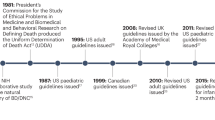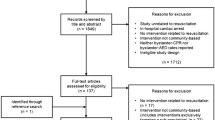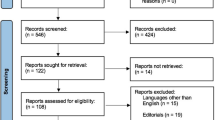Abstract
Neuroprognostication, or the prediction of recovery from disorders of consciousness caused by severe brain injury, is as critical as it is complex. With profound implications for mortality and quality of life, neuroprognostication draws upon an intricate set of biomedical, probabilistic, psychosocial and ethical factors. However, the clinical approach to neuroprognostication is often unsystematic, and consequently, variable among clinicians and prone to error. Here, we offer a stepwise conceptual framework for reasoning through neuroprognostic determinations — including an evaluation of neurological function, estimation of a recovery trajectory, definition of goals of care and consideration of patient values — culminating in a clinically actionable formula for weighing the risks and benefits of life-sustaining treatment. Although the complexity of neuroprognostication might never be fully reducible to arithmetic, this systematic approach provides structure and guidance to supplement clinical judgement and direct future investigation.
This is a preview of subscription content, access via your institution
Access options
Access Nature and 54 other Nature Portfolio journals
Get Nature+, our best-value online-access subscription
$29.99 / 30 days
cancel any time
Subscribe to this journal
Receive 12 print issues and online access
$209.00 per year
only $17.42 per issue
Buy this article
- Purchase on Springer Link
- Instant access to full article PDF
Prices may be subject to local taxes which are calculated during checkout




Similar content being viewed by others
References
Greer, D. M., Rosenthal, E. S. & Wu, O. Neuroprognostication of hypoxic-ischaemic coma in the therapeutic hypothermia era. Nat. Rev. Neurol. 10, 190–203 (2014).
Giacino, J. T. et al. Practice guideline update recommendations summary: disorders of consciousness. Neurology 99, 1699–1709 (2018).
Elmer, J. et al. Association of early withdrawal of life-sustaining therapy for perceived neurological prognosis with mortality after cardiac arrest. Resuscitation 102, 127–135 (2016).
Turgeon, A. F. et al. Determination of neurologic prognosis and clinical decision making in adult patients with severe traumatic brain injury. Crit. Care Med. 41, 1086–1093 (2013).
Turgeon, A. F. et al. Mortality associated with withdrawal of life-sustaining therapy for patients with severe traumatic brain injury: a Canadian multicentre cohort study. CMAJ 183, 1581–1588 (2011).
Becker, K. J. et al. Withdrawal of support in intracerebral hemorrhage may lead to self-fulfilling prophecies. Neurology 56, 766–772 (2001).
Leblanc, G. et al. Incidence and impact of withdrawal of life-sustaining therapies in clinical trials of severe traumatic brain injury: a systematic review. Clin. Trials 15, 398–412 (2018).
Williamson, T. et al. Withdrawal of life-supporting treatment in severe traumatic brain injury. JAMA Surg. 27710, E1–E8 (2020).
McCredie, V. A. et al. Timing of withdrawal of life-sustaining therapies in severe traumatic brain injury: Impact on overall mortality. J. Trauma. Acute Care Surg. 80, 484–491 (2016).
van Veen, E. et al. End-of-life practices in traumatic brain injury patients: report of a questionnaire from the CENTER-TBI study. J. Crit. Care 58, 78–88 (2020).
Avidan, A. et al. Variations in end-of-life practices in intensive care units worldwide (Ethicus-2): a prospective observational study. Lancet Respir. Med. 9, 1101–1110 (2021).
Pratt, A. K., Chang, J. J. & Sederstrom, N. O. A fate worse than death. Crit. Care Med. 47, 591–598 (2019).
Edlow, B. L., Claassen, J., Schiff, N. D. & Greer, D. M. Recovery from disorders of consciousness: mechanisms, prognosis and emerging therapies. Nat. Rev. Neurol. 17, 135–156 (2021).
Giacino, J. T. The vegetative and minimally conscious states: consensus-based criteria for establishing diagnosis and prognosis. NeuroRehabilitation 19, 293–298 (2004).
Laureys, S. et al. Unresponsive wakefulness syndrome: a new name for the vegetative state or apallic syndrome. BMC Med 8, 68 (2010).
Posner, J. B., Saper, C. B., Schiff, N. D. & Claassen, J. Plum and Posner’s Diagnosis and Treatment of Stupor and Coma (Oxford Univ. Press, 2019).
Giacino, J. T. et al. Behavioral assessment in patients with disorders of consciousness: gold standard or fool’s gold? Prog. Brain Res 177, 33–48 (2009).
Giacino, J. T. & Kalmar, K. Diagnostic and prognostic guidelines for the vegetative and minimally conscious states. Neuropsychol. Rehabil. 15, 166–174 (2005).
Giacino, J. T., Kalmar, K. & Whyte, J. The JFK coma recovery scale-revised: measurement characteristics and diagnostic utility. Arch. Phys. Med. Rehabil. 85, 2020–2029 (2004).
Faugeras, F. et al. Survival and consciousness recovery are better in the minimally conscious state than in the vegetative state. Brain Inj. 32, 72–77 (2018).
Giacino, J. & Kalmar, K. The vegetative and minimally conscious states: a comparison of clinical features and functional outcome. J. Head. Trauma. Rehabil. 12, 36–51 (1997).
Katz, D. I., Polyak, M., Coughlan, D., Nichols, M. & Roche, A. Natural history of recovery from brain injury after prolonged disorders of consciousness: outcome of patients admitted to inpatient rehabilitation with 1-4 year follow-up. Prog. Brain Res. 177, 73–88 (2009).
Fins, J. J. Rights Come to Mind: Brain Injury, Ethics, and the Struggle for Consciousness (Cambridge Univ. Press, 2015).
Fischer, D. B. & Truog, R. D. What is a reflex? A guide for understanding disorders of consciousness. Neurology 85, 543–548 (2015).
Fischer, D. B. & Truog, R. D. The problems with fixating on consciousness in disorders of consciousness. Am. J. Bioeth. Neurosci. 8, 135–140 (2017).
Fischer, D. B. & Truog, R. D. Conscientious of the conscious: interactive capacity as a threshold marker for consciousness. Am. J. Bioeth. Neurosci. 4, 26–33 (2013).
Kondziella, D., Friberg, C. K., Frokjaer, V. G., Fabricius, M. & Møller, K. Preserved consciousness in vegetative and minimal conscious states: systematic review and meta-analysis. J. Neurol. Neurosurg. Psychiatry 87, 485–492 (2016).
Schnakers, C. et al. Covert cognition in disorders of consciousness: a meta-analysis. Brain Sci. 10, 930 (2020).
Schiff, N. D. Cognitive motor dissociation following severe brain injuries. JAMA Neurol. 72, 1413–1415 (2015).
Kondziella, D. et al. European Academy of Neurology guideline on the diagnosis of coma and other disorders of consciousness. Eur. J. Neurol. 27, 741–756 (2020).
Comanducci, A. et al. Clinical and advanced neurophysiology in the prognostic and diagnostic evaluation of disorders of consciousness: review of an IFCN-endorsed expert group. Clin. Neurophysiol. 131, 2736–2765 (2020).
Naccache, L. Minimally conscious state or cortically mediated state? Brain 141, 949–960 (2018).
Kondziella, D. et al. A precision medicine framework for classifying patients with disorders of consciousness: advanced classification of consciousness endotypes (ACCESS). Neurocrit. Care 35, 27–36 (2021).
Threlkeld, Z. D. et al. Functional networks reemerge during recovery of consciousness after acute severe traumatic brain injury. Cortex 106, 299–308 (2018).
Sair, H. I. et al. Early functional connectome integrity and 1-year recovery in comatose survivors of cardiac arrest. Radiology 287, 247–255 (2018).
Chennu, S. et al. Brain networks predict metabolism, diagnosis and prognosis at the bedside in disorders of consciousness. Brain 140, 2120–2132 (2017).
Vanhaudenhuyse, A. et al. Default network connectivity reflects the level of consciousness in non-communicative brain-damaged patients. Brain 133, 161–171 (2010).
Sokoliuk, R. et al. Covert speech comprehension predicts recovery from acute unresponsive states. Ann. Neurol. 89, 646–656 (2020).
Wang, F. et al. Cerebral response to subject’s own name showed high prognostic value in traumatic vegetative state. BMC Med 13, 83 (2015).
Coleman, M. R. et al. Towards the routine use of brain imaging to aid the clinical diagnosis of disorders of consciousness. Brain 132, 2541–2552 (2009).
Owen, A. M. et al. Detecting awareness in the vegetative state. Science 313, 1402 (2006).
Monti, M. M. et al. Willful modulation of brain activity in disorders of consciousness. N. Engl. J. Med 362, 579–589 (2010).
Edlow, B. L. et al. Early detection of consciousness in patients with acute severe traumatic brain injury. Brain 140, 2399–2414 (2017).
Claassen, J. et al. Detection of brain activation in unresponsive patients with acute brain injury. N. Engl. J. Med. 380, 2497–2505 (2019).
Wannez, S., Heine, L., Thonnard, M., Gosseries, O. & Laureys, S. The repetition of behavioral assessments in diagnosis of disorders of consciousness. Ann. Neurol. 81, 883–889 (2017).
Rundgren, M. et al. Neuron specific enolase and S-100B as predictors of outcome after cardiac arrest and induced hypothermia. Resuscitation 80, 784–789 (2009).
Tiainen, M., Roine, R. O., Pettilä, V. & Takkunen, O. Serum neuron-specific enolase and S-100B protein in cardiac arrest patients treated with hypothermia. Stroke 34, 2881–2886 (2003).
Sandroni, C. et al. Prognostication in comatose survivors of cardiac arrest: an advisory statement from the European Resuscitation Council and the European Society of Intensive Care Medicine. Intensive Care Med. 40, 1816–1831 (2014).
Scarpino, M. et al. Does a combination of ≥2 abnormal tests vs. the ERC-ESICM stepwise algorithm improve prediction of poor neurological outcome after cardiac arrest? A post-hoc analysis of the ProNeCA multicentre study. Resuscitation 160, 158–167 (2021).
Nolan, J. P. et al. European Resuscitation Council and European Society of Intensive Care Medicine guidelines for post-resuscitation care 2015. Section 5 of the European Resuscitation Council guidelines for resuscitation 2015. Resuscitation 95, 202–222 (2015).
Forsyth, R. J., Salorio, C. F. & Christensen, J. R. Modelling early recovery patterns after paediatric traumatic brain injury. Arch. Dis. Child. 95, 266–270 (2010).
Christensen, B. K. et al. Recovery of cognitive function after traumatic brain injury: a multilevel modeling analysis of Canadian outcomes. Arch. Phys. Med. Rehabil. 89, S3–S15 (2008).
Hart, T. et al. Functional recovery after severe traumatic brain injury: an individual growth curve approach. Arch. Phys. Med. Rehabil. 95, 2103–2110 (2014).
Muehlschlegel, S. et al. Goals-of-care decision aid for critically ill patients with TBI: development and feasibility testing. Neurology 95, E179–E193 (2020).
Jox, R. J. et al. Diagnosis and decision making for patients with disorders of consciousness: a survey among family members. Arch. Phys. Med. Rehabil. 96, 323–330 (2015).
Reynolds, J. M. The ableism of quality of life judgments in disorders of consciousness: who bears epistemic responsibility? Am. J. Bioeth. Neurosci. 7, 59–61 (2016).
Wilson, M., Staniforth, A., Till, R., Das Nair, R. & Vesey, P. The psychosocial outcomes of anoxic brain injury following cardiac arrest. Resuscitation 85, 795–800 (2014).
Bruno, M. A. et al. A survey on self-assessed well-being in a cohort of chronic locked-in syndrome patients: happy majority, miserable minority. BMJ Open 1, e000039 (2011).
Albrecht, G. L. & Devlieger, P. J. The disability paradox: high quality of life against all odds. Soc. Sci. Med. 48, 977–988 (1999).
Giovannetti, A. M., Covelli, V., Sattin, D. & Leonardi, M. Caregivers of patients with disorder of consciousness: burden, quality of life and social support. Acta Neurol. Scand. 132, 259–269 (2015).
Chiambretto, P., Ferrario, S. R. & Zotti, A. M. Patients in a persistent vegetative state: caregiver attitudes and reactions. Acta Neurol. Scand. 104, 364–368 (2001).
Chinner, A., Pauli, R. & Cruse, D. The impact of prolonged disorders of consciousness on family caregivers’ quality of life–a scoping review. Neuropsychol. Rehabil. https://doi.org/10.1080/09602011.2021.1922463 (2021).
Edlow, B. L. & Fin, J. J. Assessment of covert consciousness in the intensive care unit: clinical and ethical considerations. J. Head. Truma Rehabil. 33, 424–434 (2018).
Souter, M. J. et al. Recommendations for the critical care management of devastating brain injury: prognostication, psychosocial, and ethical management: a position statement for healthcare professionals from the Neurocritical Care Society. Neurocrit. Care 23, 4–13 (2015).
Gigerenzer, G., Gaissmaier, W., Kurz-Milcke, E., Schwartz, L. M. & Woloshin, S. Helping doctors and patients make sense of health statistics. Psychol. Sci. Public. Interest 8, 53–96 (2007).
Lee Char, S. J., Evans, L. R., Malvar, G. L. & White, D. B. A randomized trial of two methods to disclose prognosis to surrogate decision makers in intensive care units. Am. J. Respir. Crit. Care Med. 182, 905–909 (2010).
Muehlschlegel, S., Shutter, L., Col, N. & Goldberg, R. Decision aids and shared decision-making in neurocritical care: an unmet need in our neuroICUs. Neurocrit. Care 23, 127–130 (2015).
Wiegand, D. In their own time: the family experience during the process of withdrawal of life-sustaining therapy. J. Palliat. Med. 11, 1115–1121 (2008).
Searight, H. R. Ethical Challenges in Multi-Cultural Patient Care: Cross Cultural Issues at the End of Life 85–99 (Springer, 2019).
Jones, K., Quinn, T., Mazor, K. M. & Muehlschlegel, S. Prognostic uncertainty in critically ill patients with traumatic brain injury: a multicenter qualitative study. Neurocrit. Care 35, 311–321 (2021).
Acknowledgements
The authors have received funding from the NIH National Institute of Neurological Disorders and Stroke (R25NS06574309, R21NS109627), the NIH Director’s Office (DP2HD101400), James S. McDonnell Foundation, the Tiny Blue Dot Foundation, and the National Institute on Disability, Independent Living and Rehabilitation Research (90DPTB0011).
Author information
Authors and Affiliations
Contributions
The authors contributed equally to all aspects of the article.
Corresponding author
Ethics declarations
Competing interests
The authors declare no competing interests.
Peer review
Peer review information
Nature Reviews Neurology thanks James Bernat, Johanna Horn, Niklas Nielsen and the other, anonymous, reviewer(s) for their contribution to the peer review of this work.
Additional information
Publisher’s note
Springer Nature remains neutral with regard to jurisdictional claims in published maps and institutional affiliations.
Glossary
- Advance directives
-
Legal documents that individuals prepare to specify their preferences about medical care, to be used if they are unable to make those decisions themselves in the future.
- Surrogates
-
Individuals who have been designated to make decisions on a patient’s behalf, if the patient is unable to make those decisions themselves.
Rights and permissions
About this article
Cite this article
Fischer, D., Edlow, B.L., Giacino, J.T. et al. Neuroprognostication: a conceptual framework. Nat Rev Neurol 18, 419–427 (2022). https://doi.org/10.1038/s41582-022-00644-7
Accepted:
Published:
Issue Date:
DOI: https://doi.org/10.1038/s41582-022-00644-7
This article is cited by
-
Serum metabolism alteration behind different etiology, diagnosis, and prognosis of disorders of consciousness
Chinese Neurosurgical Journal (2024)
-
Characterizing coma in large vessel occlusion stroke
Journal of Neurology (2024)
-
Disclosing Results of Tests for Covert Consciousness: A Framework for Ethical Translation
Neurocritical Care (2024)
-
Measuring Consciousness in the Intensive Care Unit
Neurocritical Care (2023)
-
Early Shared Decision-Making for Older Adults with Traumatic Brain Injury: Using Time-Limited Trials and Understanding Their Limitations
Neurocritical Care (2023)



